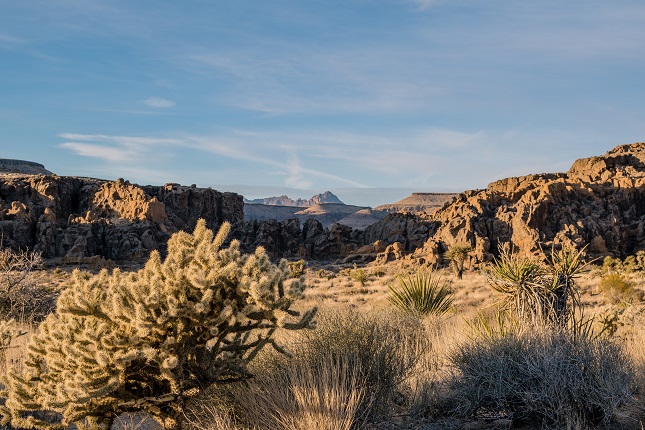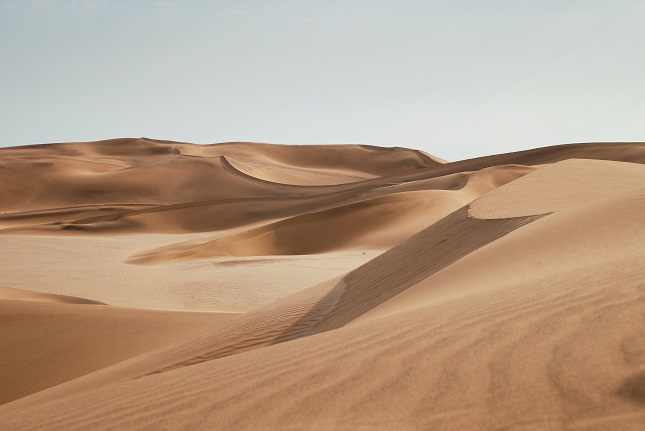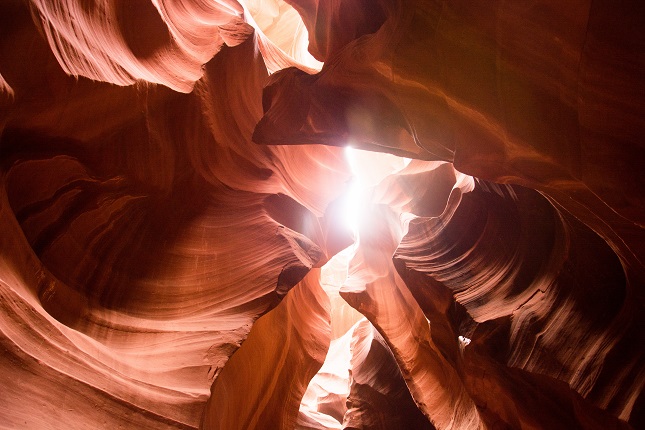Salar de Uyuni, Bolivia

Salar de Uyuni is the world's largest salt flat, located in the Andes Mountains of Bolivia. It was formed from a shallow salt lake, covering an area of about 10,600 km2.This salt flat is covered with a layer of white salt and a thin layer of water during the rainy season, and thanks to that, the surface of the field becomes the world's largest mirror. Many visitors are dazzled by the sunlight reflecting on the lake's surface and immerse themselves in the natural beauty of the lake.
Sahara Desert, Africa

The Sahara has a surface area of 9.4 million km2, occupies a quarter of Africa and is the hottest desert on the planet. Most of the desert is arid rocky plateaus and “sand seas” with dunes up to 180 m high. However, this is only a small part of this giant desert that is known to many people, it still has many mysteries.
Mojave Desert, California, Nevada

Located mainly within the territories of California and Nevada, the Mojave covers an area of nearly 65,000 km2and is the driest desert in North America. It has little vegetation but is known as the only place in the world where Joshua trees can be found. Amid the desert's rocky landscape, the Joshua trees look like soldiers standing sentinel. Locals often refer to the Mojave as the High Desert.
Namib Desert, Namibia

The Namib is a coastal desert in southern Africa, stretching over 1,900 km but relatively narrow with an average width of over 110 km and considered one of the oldest deserts in the world. It is known for its sand seas and orange sand dunes that can reach up to 300 m high and are recorded as one of the largest sand dunes on the planet. The average nighttime temperature is 0°C and the average daytime temperature is 50°C. With such a large temperature difference between day and night, the Namib Desert is home to some of the strangest animals and plants in the world.
The Wave, Arizona, USA

The Wave is the name of a group of giant and beautiful sandstone formations in Arizona. Located north of Coyote Buttes in Arizona, between Paria Canyon and Vermillion Cliffs National Monument, these rock formations create mesmerizing wavy patterns with vibrant colors, attracting tourists, especially photographers from all over the world. The Wave consists of many intertwined U-shaped troughs of sandstone slabs that were formed during the Jurassic period, up to 190 million years ago. It is considered a priceless gift that nature has bestowed on this land.
White Sands National Monument, New Mexico, USA

White Sands National Monument in New Mexico is a spectacular sea of sparkling white sand. The white sands stand out against the blue sky, creating an unforgettable scene. White Sands is located in the northern Chihuahuan Desert, covering more than 700,000 square kilometers.2, created when a shallow sea dried up millions of years ago.
Kalahari Desert

The Kalahari Desert is 500,000 km wide2, in southern Africa. The Kalahari is covered with reddish-brown sand. However, it is not really considered a desert, because some areas inside still have water, and receive rain during the year, creating favorable conditions for some creatures to thrive. And this is also the home of the San, Sho, Barwa, Kung or Khwe indigenous peoples.


































